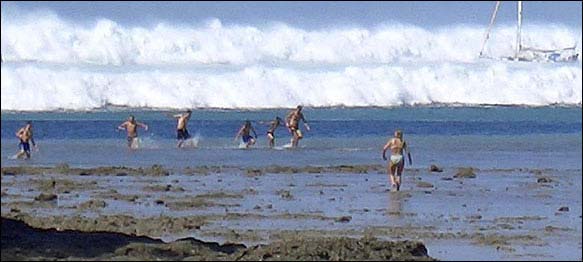What does it look like?
The arrive of a tsunami wave on the beach can assume various forms. The withdrawal of the sea is the most evident phenomenon, it can withdraw up to hundreds of metres. This is known as a negative arrival of a wave.
|
|
The tsunami of 26th December 2004 appeared in some places as a withdrawal of the sea. This behaviour was noticed by Tilly, a 10-year old English girl, who was in Thailand. She saw the withdrawal of the sea and remembered what the teacher had told her at school. She recognised that a tsunami wave was hitting the coast, and saved many lives. A tsunami wave can also appear as a sudden incoming wave. It can hit the coast as a wall with devastating consequences, or as a swelling of the sea, something similar to a tide. A tsunami consists of a series of waves. You can't consider the danger to be over after the first wave has arrived, subsequent waves can arrive after some minutes, or after tens of minutes and may be bigger and more powerful than the first.
The Webweavers: Last modified Tue, 12 Aug 2006 14:21:40 GMT
